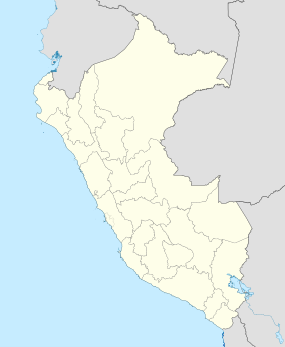Pachacamac

View of Pachacamac
|
|
| Location | Lima, Lima Region, Peru |
|---|---|
| Coordinates | 12°15′24″S 76°54′01″W / 12.25667°S 76.90028°WCoordinates: 12°15′24″S 76°54′01″W / 12.25667°S 76.90028°W |
| History | |
| Periods | Middle Horizon, Late Intermediate, Late Horizon |
| Cultures | Huari, Lima, Inca Empire |
Pachacamac (Quechua: Pachakamaq) is an archaeological site 40 kilometres (25 mi) southeast of Lima, Peru in the Valley of the Lurín River. The site was first settled around A.D. 200 and was named after the "Earth Maker" creator god Pacha Kamaq. The site flourished for about 1,300 years until the Spanish invaded. Pachacamac covers about 600 hectares of land.
Pacha Kamaq ('Earth-Maker') was considered the creator god by the people who lived in this part of Peru before the Inca conquest. The Inca took him into their pantheon, but was not an equal of Viracocha; Virachocha was seen as being more powerful.
The myths that survive of Pacha Kamaq are sparse and confused: some accounts, for example, identify him as Manco Cápac's cowardly brother Ayca, while others say that he, Manco Cápac and Viracocha were the sole three sons of Inti, the sun god. Another story says that he made the first man and the first woman, but forgot to give them food – and when the man died and the woman prayed over Pachacamac's head to his father Inti to make her the mother of all the peoples of earth, Pachacamac was furious. One by one, as the children were born, he tried to kill them – only to be beaten and to be thrown into the sea by her hero-son Wichama, after which he gave up the struggle and contented himself by becoming the supreme god of fish.
In the 1890s archaeologists first began exploring Pachacamac. They found many enormous buildings and burials that had been previously looted. The first (sacred) section of the site includes temples of religious significance and a large cemetery. The second section includes several buildings which are mainly secular pyramids. In this complex of buildings were mud-brick stepped pyramids with ramps and plazas. These buildings were dated between the late 1300s and the mid-1400s.
...
Wikipedia

